
Guests
- Karen Lewispresident of the Chicago Teachers Union.
- Aaron Pallasprofessor of sociology and education at Teachers College, Columbia University.
- Jaisal NoorDemocracy Now! education correspondent and independent journalist.
Links
- Juan Gonzalez: "Accurate or Faulty, New Teacher Evaluations are Coming"
- Chicago Teachers Union
- Video by Jaisal Noor: Teachers Risk Jobs to Blow Whistle on School Management Firm
- Video by Jaisal Noor: Despite public outcry, Chicago approves closure of 17 schools
- Occupy Education
- Kenwood Oakland Community Organization
- The Real News Network
As students across the country stage a National Day of Action to Defend Public Education, we look at the nation’s largest school systems—Chicago and New York City—and the push to preserve quality public education amidst new efforts to privatize schools and rate teachers based on test scores. In Chicago, the city’s unelected school board voted last week to shut down seven schools and fire all of the teachers at 10 other schools. In New York City, many educators are criticizing Mayor Michael Bloomberg’s administration after the release of the names of 18,000 city teachers, along with a ranking system that claims to quantify each teacher’s impact on the reading and math scores of their pupils on statewide tests. “The danger is that if teachers and schools are held accountable just for these relatively narrow measures of what it is that students are doing in class, that will become what drives the education system,” says Columbia University’s Aaron Pallas, who studies the efficiency of teacher evaluation systems. “The effects of these school closings in [New York City] is one of the great untold stories today,” says Democracy Now! education correspondent Jaisal Noor. “The bedrock of these communities [has been] these neighborhood schools, and now they are being destroyed.” Karen Lewis, president of the Chicago Teachers Union, says, “When you have a CEO in charge of a school system, as opposed to a superintendent, a real educator, what ends up happening is that they literally have no clue as to how to run the schools.” Lewis recounts a meeting where she says Chicago Mayor Rahm Emanuel told her that “25 percent of these kids are never going to be anything. They’re never going to amount to anything.” [includes rush transcript]
Transcript
JUAN GONZALEZ: Students inspired by the Occupy Wall Street movement have called for a National Day of Action to Defend Education today. Dubbed “Occupy Education,” protests are planned from California to New York at college campuses as well as high schools. In California, thousands of university students are expected to walk out of classes to protest rising tuition, staff layoffs and student debt. Here in New York, students from New York University, City University of New York and area high schools plan to march to the Department of Education offices and then later hold an open-air assembly.
Well, today we’re going to examine a series of developing stories at two of the nation’s largest school systems: New York and Chicago. In Chicago, the city’s school board voted last week to shut down seven schools and fire all of the teachers at 10 other schools. Democracy Now!’s Jaisal Noor was in Chicago for the vote. This is an excerpt of a piece he produced [for The Real News Network] on the school closings.
JAISAL NOOR: Many, including teacher Katie Osgood, accused Education officials of chronically under funding the schools they now say are failing and need to be closed.
KATIE OSGOOD: They need real, real teachers. They need these teachers. In order to succeed, these kids need the most resources, but instead CPS gives them the least. And I urge the board today to fully resource every neighborhood school, and I guarantee you will never have to close a school again.
JAISAL NOOR: Despite the opposition, Chicago’s unelected school board voted unanimously to close all 17 schools.
ESTELA BELTRAN: Seven-zero. Seven ayes, zero nays.
JAISAL NOOR: Brushing aside public criticism, Board Vice President Jesse Ruiz defended their decision.
JESSE RUIZ: I mean, there’s been a record of these schools not performing and not serving our students as well as they should for years. And that’s unfortunate. And it’s also unfortunate there are more schools like them. I mean, the worst thing I felt bad about today is that we couldn’t do this for more kids today. It was an opportunity to do something for those kids.
JAISAL NOOR: The vast majority of teachers and parents left the hearing after the public comment period with the belief the board had already decided to vote in favor of the closings. The handful of remaining parents and activists reacted immediately after the vote.
PARENTS AND ACTIVISTS: Shame on you! Shame on you! Shame on you! Shame on you! Shame on you!
AMY GOODMAN: After the vote, Jaisal Noor spoke to Latrice Watkins, who took part in a recent overnight occupation in one of the Chicago schools slated to be closed.
LATRICE WATKINS: I don’t understand. I do not understand. We’re trying to work with them, but they’ve given us the boot every time. Whatever they sow, they’re going to reap. That’s all I have to say. They know what they’re doing, and they know it’s wrong. They’re going to reap what they sow.
AMY GOODMAN: Here in New York, many educators are criticizing New York Mayor Michael Bloomberg’s administration for releasing the names of 18,000 city teachers, along with a ranking system that claims to quantify each teacher’s impact on the reading and math scores of their students on statewide tests. Some experts have warned the rankings are deeply flawed, and even the city’s Department of Education concedes the margin of error could be huge. The data was released after a ruling by the state’s highest court. The Obama administration has urged other school districts to release similar data on teachers.
We’re joined by three guests. In Chicago, Karen Lewis is with us, president of the Chicago Teachers Union. And here in New York, Aaron Pallas joins us, professor of sociology and education at Teachers College, Columbia University. He studies the efficiency of teacher evaluation systems. And Democracy Now!'s Jaisal Noor is with us. He's been reporting on public education in New York and Chicago.
But Juan, let’s start with you, because you wrote your column this week on this subject here in New York City.
JUAN GONZALEZ: Actually, it was last week. I wrote it as a—in the prelude to the release of the findings, because, you know, one of the things that’s been reported in a lot of the press is that the Bloomberg administration released these in response to Freedom of Information requests from all of the New York media organizations. In reality, the Bloomberg administration privately solicited the media organizations to do the FOILs and tried to get them all to do it, because they wanted to assure the maximum release of these reports. And so, there was definitely a desire of the Bloomberg administration to get these out, but it was constrained by the fact that it had a previous agreement with the teachers’ union that these were going to be confidential reports. So it needed the media to step in, FOIL them so that it could do what it wanted to do, which was to release these records to the public.
And I think that, obviously, it’s created huge consternation among thousands of teachers across the city. And, of course, these kinds of evaluation systems are increasingly being used across the country to hold teachers responsible for the progress on tests that are, depending on the state, very—have major flaws in them and, of course, don’t judge other issues that a teacher is involved in, in terms of the education of the children. It only deals with reading and math scores.
AMY GOODMAN: Well, Professor Pallas, you’ve been looking closely at this. Can you explain what your concern is with rating teachers according to the tests?
AARON PALLAS: Well, a lot has to do with the limitations of the tests. And Juan is quite correct. We demand a lot of our schools and of our teachers with regard to a whole range of things that we’re trying to develop in students: intellectual curiosity, creativity, respect for others, a commitment to civic democracy. And tests are a very, very poor measure of a lot of those things. So the danger is that if teachers and schools are held accountable just for these relatively narrow measures of what it is that students are doing in class, that will become what drives the education system. It becomes the tail wagging the dog, with a focus on things that are somewhat important—I mean, test scores are not unimportant, but they’re a very small part of the overall picture.
JUAN GONZALEZ: And, of course, there is the issue now that the state, the entire state of New York, is in the process now of adopting new legislation that would require these kinds of value-added measurements to judge all the teachers across the state.
AARON PALLAS: And that’s something that’s happening in many states. When the federal government released its Race to the Top program, many states were incentivized to try to create these kinds of systems that would link teachers evaluations to student test scores. And so there’s more than two dozen states that are moving towards this. New York certainly is one of them. And the danger is that—first, that the tests are measuring a small part of what we think is important, and second, they’re very blunt instruments. What we saw in New York is that the margin of error for a given teacher, even for three or four years of information about their students, is very, very wide. We can’t tell very well how teachers are doing, even on this limited measure.
AMY GOODMAN: Jaisal Noor, you’ve been covering education from New York to Chicago. And today is Occupy Education day for many students around the country. As we head to Chicago to continue this discussion, talk about the bridge, what links them in the Occupy movement.
JAISAL NOOR: It’s really interesting, because a lot of people don’t know that some of the key organizers, the key founders of Occupy Wall Street are actually public school teachers. They know better than anyone the effects of the 1 percent having this undue influence on public education. You have Bill Gates, Eli Broad, these rich, wealthy philanthropists that are backed by—first by No Child Left Behind, now by Race to the Top, that these people, who would never send their kids to a public school, can dictate the policies that are implemented in public schools across the country through these unelected school boards, as we see in Chicago and in New York. And, you know, Karen Lewis can definitely talk more about the struggles in Chicago, one of the areas that has been most altered under No Child Left Behind and where the prototype for Race to the Top, Renaissance 2010, was first created.
AMY GOODMAN: And of course, this is extremely important because Chicago is where President Obama comes from and where his secretary of education, Arne Duncan, comes from. Juan?
JUAN GONZALEZ: And where his former chief of staff is now the mayor. Well, Jaisal, I want to turn back to your reporting in Chicago. Three Chicago teachers agreed to speak to you on the condition that you film only their hands and distorted their voices. I want to play a part of your interview with a teacher in a school managed by the Academy for Urban School Leadership.
CHICAGO TEACHER: We are speaking out about AUSL gaining control over more local schools and taking that control away from the public and the community whose children are supposed to be educated at these schools and should have a say in how those schools are run. But AUSL has not shown a capacity for actually improving the educations of those students. And if they gain control, more control, of these schools, I think that these students are—and these schools, in general—will be worse off than they are now.
The biggest problem with our school and the organization is that they don’t understand our students. And the organization is the Academy for Urban School Leadership, but they don’t understand urban schools, and they have not shown any leadership in dealing with what our school needs and what our students need.
If the Board of Ed is listening to this, I would urge them to—if they are going to close a school, and that is the only option they see to help a school improve, is to turn it around, the primary requirement for that should be that the local community retains a say in how that school is managed. And if they take away that say, they’re going to be handing it over to an organization that doesn’t know anything about their families, their community or their students.
AMY GOODMAN: Jaisal Noor, can you explain why you just filmed this teacher’s hands and why his voice is distorted? Explain what the Urban Academy is.
JAISAL NOOR: Right, Amy. So, that report was part of a series I did in Chicago for The Real News and Free Speech Radio News. And these teachers contacted me, current teachers from AUSL, the Academy for Urban School Leadership. It’s this nonprofit private company, this turnaround specialist, who are given schools by the Chicago public school system, where all the teachers are fired, the principals are fired, all the janitors are fired, and this company comes in to hire all new staff and turn around these so-called failing schools.
Now, one of the reasons I went to Chicago was because of this growing outrage against these policies. Protesters were paid to protest for these school closings. That’s how unpopular these policies are. We heard from Latrice Watkins, a parent who organized for months in her community. They created an alternative plan to put forward to the school board. The school board didn’t listen. And this company has very close ties to the Chicago school board. Its former chairman is now the president of the Chicago school board. And it’s just a—
JUAN GONZALEZ: Appointed by Rahm Emanuel?
JAISAL NOOR: Appointed by Rahm Emanuel last year. So this is a scenario you can’t even make up. The unelected school board voted unanimously to turn several of these schools over to AUSL. And so, it’s current teachers there that are saying things are so bad, there’s no accountability there, that we, as current teachers, who went to the schools as a way to fix education for these communities, disinvested communities, even we think this is failing us. And I know Karen Lewis can talk more about the challenges there.
JUAN GONZALEZ: Yeah, well, I’d like to bring in Karen Lewis, president of the Chicago Teachers Union. You’ve been in the forefront of attempts to preserve the historic model of public education in your city. What about these changes that have occurred and these schools being turned over to AUSL?
KAREN LEWIS: Well, AUSL has been touted as yet another silver bullet to help our students. Unfortunately, the data don’t show that that’s what’s happening. And we have seen then this whole change. I mean, look, AUSL has been around long enough for them to have data. They were part of the Renaissance 2010 program. So, literally, that’s the status quo. We’re looking to change the way we do school, which is to have more community input. But we also have an agenda that is giving short shrift to a significant population of our students.
AMY GOODMAN: Explain how the whole system works. I mean, this idea that Chicago is incubating these new prototypes for the country—as we were saying before the clip of the teacher who thought one of these schools would actually help the students and now believes, from teaching within the school, that it doesn’t, we’re talking about the Secretary of Education, Arne Duncan, coming from Chicago, of course the President himself, President Obama, Rahm Emanuel, the chief of staff, now the mayor of Chicago.
KAREN LEWIS: Yes. Well, Amy, one of the biggest problems is that when you have a CEO in charge of a school system, as opposed to a superintendent, a real educator, what you end up happening then—what ends up happening is that they literally have no clue as to how to run the schools. So here comes an organization that says, “We have a fix. This is going to work.” And on paper, it looks amazing. It’s people who have been trained in a certain way, but quite frankly, it’s the pedagogy of poverty that they tend to use, and that suffices for real training. And they have what are called “residents,” so they have other people who are coming in, training to be teachers. And then, once they go through a year with supposedly a master teacher, who could, quite frankly, be a second-year teacher, then they’re sent out to go to other schools under those circumstances.
So, what happened was, two years ago, they did not give AUSL as many schools as they wanted, and last year they got none. So they had all of these people that they had, quote-unquote, “trained” ready to go to schools, and there were no schools available to them. So when we saw that the president of the board and also the chief operating officer, who came from AUSL, and prior to that, Motorola—so, again, we have this very business-oriented model here—when we saw that they were appointed, we knew this year that AUSL was going to get—I call it AUSL—was going to get a ton of schools.
JUAN GONZALEZ: Yeah, I’d like to raise to Aaron Pallas, this whole issue of what is happening to the kinds of folks that are being recruited to run the school systems in America today. I mean, you come from Teachers College, one of the most prestigious graduate schools for education in the United States. And yet, increasingly, it is folks who don’t have training in education, who are basically CEOs and—I mean, you’re getting principals now who get these like fast training institute-type things and suddenly are given a school, without even much experience in the classroom or in education. Is education now this profession that anybody can really do it if they get the proper business training?
AARON PALLAS: I do think that there are many school systems and large city districts around the country that have chosen to go with people who don’t have the traditional education backgrounds, and I think that that is a reflection of the lack of faith that the business community has in traditional education preparation. I don’t know necessarily that the kinds of people who are being tapped to do this have much deep knowledge of how schools work, and that is one of the problems, especially in a large, complex system. The perception is it’s like any other large, complex business organization: you need to bring in someone who’s a skilled manager, and that will carry the day. But there’s something special about education, and especially public education, that requires a deeper understanding of the teaching and learning process that I think is lacking in a lot of the school leaders that we are producing today.
JUAN GONZALEZ: Because you’re not producing widgets; you’re producing human beings who are supposedly—can function as citizens in a society.
AARON PALLAS: That’s correct.
AMY GOODMAN: Jaisal, why don’t you set up this next clip? This one is in New York.
JAISAL NOOR: Right, Amy. So, a few weeks ago, just like in Chicago, there was a vote to close more schools. There was a vote in New York, and students organized. And I was talking with the students as they organized a walkout to raise awareness about these school closings. And students that are in schools that were voting—that were going to be voted on to close—
AMY GOODMAN: How many schools?
JAISAL NOOR: It was 18 schools were voted to be closed. They linked up with students whose schools are undergoing closings. And one of those schools was Paul Robeson High. And so, I talked to these students to understand why they linked up with schools that were already undergoing a closing.
AMY GOODMAN: Let’s go to the clip.
JAISAL NOOR: According to the Alliance for Quality Education, $1.3 billion in cuts in 2011 meant a reduction in spending of more than $800 per student in poor districts. In wealthy districts, the cut was about $270. Students, including Legacy senior Marte, says the city’s policies of closing schools is misguided, and they organized a walkout to send a message that other solutions are possible.
KEYLA MARTE: We’re kind of risking it all, because, with walking out, our message is not to cut school; our message is bigger, like this is our education. So the same fact that you want us to learn, we want to learn, and we have the right to learn, but you not giving us a chance just fails us, just as much as us walking out of school does. And that’s the bigger picture.
JAISAL NOOR: Marte has reached out to a dozen other schools, including Brooklyn’s Paul Robeson High. Last year, students and teachers there lost an intense battle to stop their school from being phased out. When Robeson reopened in the fall, did not have an incoming freshman class. Instead, two new schools were opened inside the same building. Robeson’s remaining staff and funding were reduced.
KAYLN BURTON: And then, when they had voted to close the school, you noticed a lot of things disappearing, in a way, like a lot of my high school years, my future, was disappearing with it, I soon, like, realized.
JAISAL NOOR: Seventeen-year-old Robeson senior Kayln Burton, who’s participating in the walkout with other classmates, says closing schools limits students’ opportunities.
KAYLN BURTON: It affected me. Like, it changed my whole perspective on what I thought I would—what I wanted to do with myself after high school. I felt like my options were very limited after a while. I mean, I came into the school for science and technology, and now I’m in a business class.
JAISAL NOOR: Why?
KAYLN BURTON: Because they don’t have science or technology anymore.
JAISAL NOOR: So that was a student at Paul Robeson High, one of the over hundred schools that has been closed down by Mayor Bloomberg since 2002. And the effects of these school closings in neighborhood schools is one of the great untold stories today, because it’s devastated communities. The staff at the school dropped from over 80 to 18 in the span of a year. So, the budget was cut by hundreds of millions of dollars. So this is like one of the untold stories. These communities have been devastated by globalization, unemployment, foreclosures. The bedrock of these communities was these neighborhood schools, and now they are being destroyed, and these communities are being—
AMY GOODMAN: Are these students walking out?
JAISAL NOOR: They’ve been—they walked out a few weeks ago, and they’re organizing again to raise awareness about this.
JUAN GONZALEZ: Well, I’d like to ask Karen Lewis, the school closings are a huge problem in Chicago, as well as New York and around the country. I understand that there’s a hearing today in the state legislature in Illinois around this issue of school closings. What is that hearing about, and what are you planning to do with your union to continue to defend the community schools?
KAREN LEWIS: Well, we have been working with a variety of community organizations and parents in order to develop language that would have a moratorium on these policies. I mean, this has not been studied, practiced, to see how well it works. And we’re getting so much conflicting information about the efficacy. So we are sponsoring bills that will actually force CPS to be infinitely more transparent. I mean, the issue about this is, they were required by a state law from last year that—because we tried to get a moratorium last year, and the requirement for the state law said that they had to involve parents in the decision-making process. And basically, what they did was say, “Here’s the decision. You comment on it. Thank you very much. And we’re going to do what we want to do, because as far as our mayor is concerned, about 100,000 children in this system don’t really matter.” So we’ve had a lot of issue with how to approach this, so we’ve done the legislative route. We’re also looking at the possibility of working with some local school councils on the legal front in terms of a lawsuit.
JUAN GONZALEZ: And Karen Lewis, could you clarify, when you say 100,000 schoolchildren don’t really matter? You recently spoke out publicly about some comments that the mayor made to you in a private meeting?
KAREN LEWIS: Mm-hmm, yes.
JUAN GONZALEZ: Could you—what was that?
KAREN LEWIS: Yes. When I first met him, we had dinner together, and he said, “Well, you know, 25 percent of these kids are never going to be anything. They’re never going to amount to anything. And I’m not throwing money at it.” And I was like, “Wow! You know, even if you believe that, you can’t say that to me.” So, I just watch how he has used black and brown and poor children as props to push an agenda that is all about privatization and all about so-called accountability, but it’s really the status quo, because once schools get put on probation here in Chicago, the Chicago Public Schools takes over, takes away the democratically controlled local school councils, takes that power away from them to hire and fire and evaluate principals and to spend discretionary funds. So, we see this culture of punishment and culture of disinvestment, and it is rampant and obviously spreading throughout the country.
AMY GOODMAN: Finally, Professor Aaron Pallas, the way the rating of teachers is being conveyed in the media—and there are a lot of ads and commercials—are that, you know, if a teacher is not pulling their weight, they shouldn’t be subjecting our children to bad education. And the reason they don’t want these ratings out is because the unions have so much control and they’ve prevented the ratings from happening until this point. They just want to protect their members, not education. Your final comment on that?
AARON PALLAS: Well, it’s a very distorted view, I think, of what’s actually happening out there. The reality is that these measures were created by the Department of Education, knowing that they were very limited. They don’t tell us very much about teachers’ performance, and they’re being used to vilify teachers. You don’t like seeing, splashed across the front page of the tabloids, “New York City’s Worst Teacher” with a photograph of the person. There’s just no call for that. It’s not correct, for one thing. And it doesn’t do anything to improve the quality of teaching in schools. If the issue is that these rankings are supposed to make teaching and learning better, I’d like to know what’s the mechanism that’s supposed to do that. Giving a teacher a ranking doesn’t improve what’s happening in any classroom across the city.
AMY GOODMAN: Well, I want to thank you all for being with us. Professor Aaron Pallas, Columbia Teachers College. Jaisal, thanks so much for your work, Democracy Now! correspondent Jaisal Noor, our education correspondent. And Karen Lewis, president of the Chicago Teachers Union.
This is Democracy Now! When we come back, we’re staying in Chicago, because environmentalists are celebrating the closing of two coal-powered plants. Then we’ll be speaking with David Cay Johnston, the Pulitzer Prize-winning reporter. Mitt Romney has presented a tax proposal. On average, it means that the top 1 percent of 1 percent, or somewhere in that neighborhood, will make an extra, oh, half—save about half-a-million dollars in taxes a year. As for 125 million of the nation’s poorest taxpayers? Their taxes will increase under his plan. Stay with us.

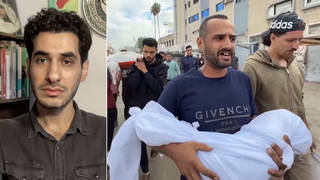
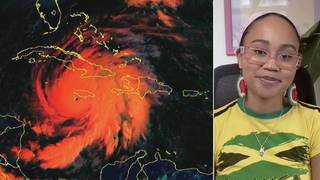
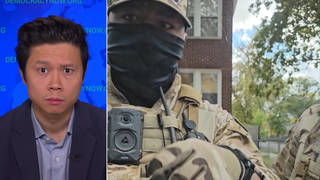
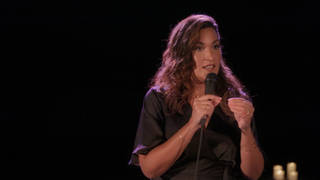





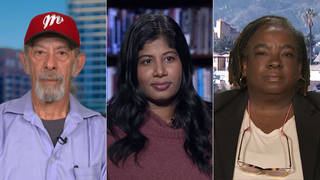
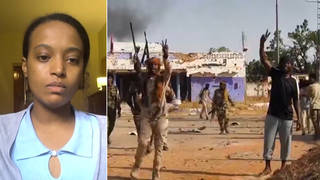
Media Options